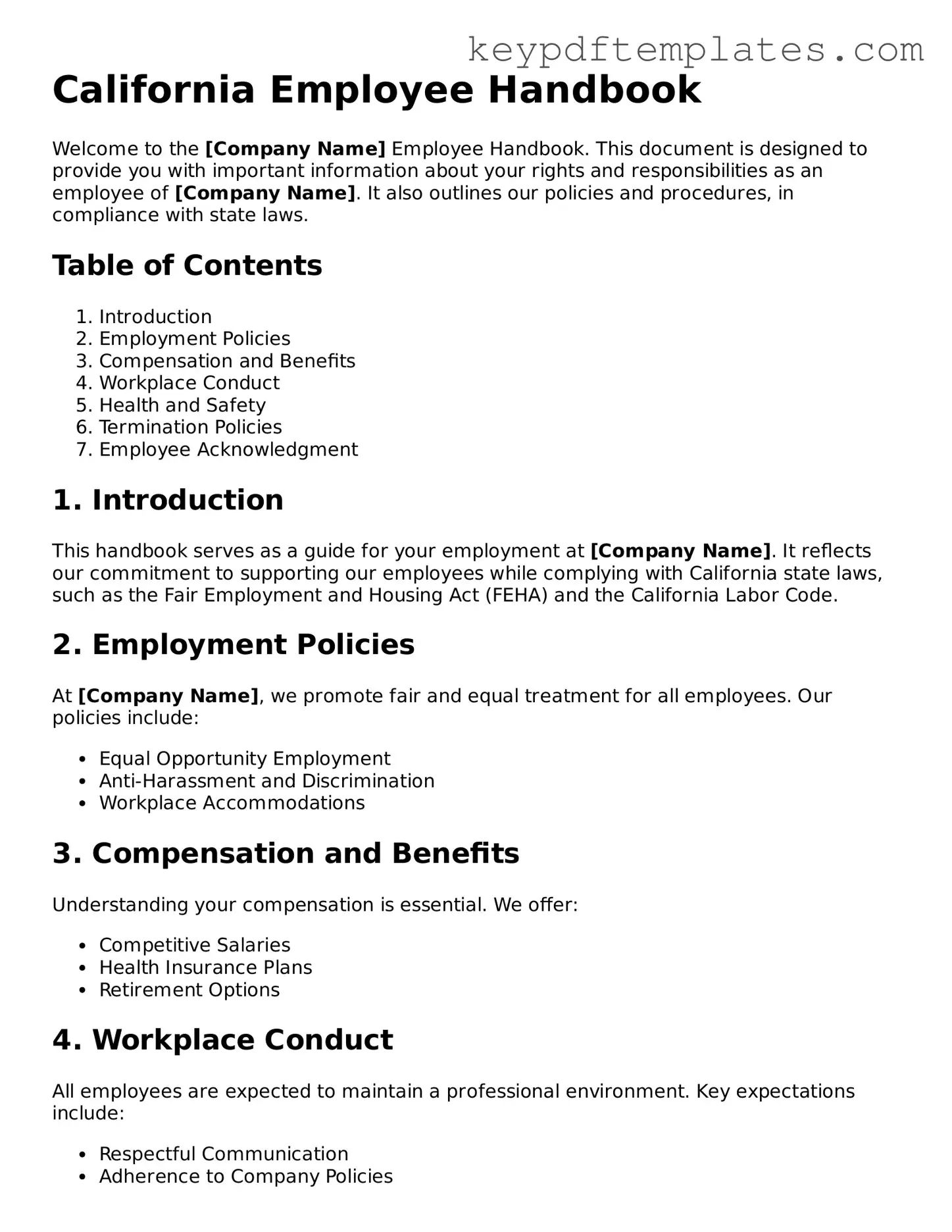Legal Employee Handbook Document for the State of California
The California Employee Handbook form is a vital document that outlines workplace policies, employee rights, and company expectations. It serves as a guide for both employers and employees, ensuring everyone is on the same page regarding workplace conduct and procedures. Creating a comprehensive handbook can help foster a positive work environment and protect the interests of both parties.
Modify Document Online
